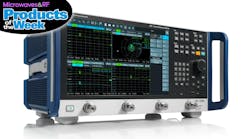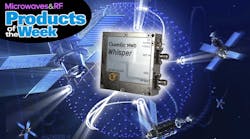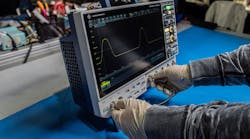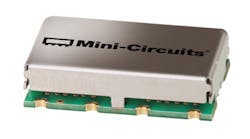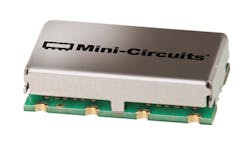Passives Cram More Power into Ever-Smaller Packages (.PDF Download)
Passive components, such as filters or attenuators, are often called upon to make critical changes to an RF/microwave filter in terms of amplitude or waveform shape. Modern system designers, however, are relentlessly faced with shrinking a system’s size, and usually without reducing the expected output power from that system. This means that passive components must get smaller while they provide increased power-handling capabilities.
In walking the exhibition floor at the recent IEEE International Microwave Symposium (IMS), trends in passive components were clear, with many suppliers extending their product lines to higher power levels and higher frequencies—many well into the millimeter-wave region—while pursuing ever-smaller packages to help system designers reach their goals for lighter weight and smaller size.
Passive components tend to be taken for granted at the systems-design level, because of their lack of active circuit elements, such as transistors, and need of a power supply. In many cases, a passive component, such as a coupler or power divider, can be added to a system whenever there’s enough space for them. Of course, this assumes that any passive component squeezed into a tight space can also dissipate whatever heat it generates by handling high signal power levels.
Directional couplers are one of the more common passive components added to a system after a certain design stage, usually to perform monitoring or testing purposes. Companies with broad product lines, such as Mini-Circuits, stock a variety of couplers for handling power levels as high as 250 W at frequencies from 5 kHz to 18 GHz. These couplers are available in core-and-wire and low-temperature-cofired-ceramic (LTCC) surface-mount designs as small as 0.12 × 0.06 in.
1. Following an industry trend in “smaller and higher-power” passive components, model SXPS-4-13-75+ four-way, 0° surface-mount power splitter/combiners are designed with higher impedance for use from 5 to 1300 MHz. (Courtesy of Mini-Circuits)
In addition to its many 50-Ω miniature surface-mount and coaxial components, Mini-Circuits also offers 75-Ω passive components for such applications as cable-television (CATV) systems. Components like the model SXPS-4-13-75+ four-way, 0° surface-mount power splitter/combiner are designed with the higher impedance for use from 5 to 1300 MHz (Fig. 1). The divider/combiner measures just 0.44 × 0.74 × 0.19 in. and comes in a shielded package with wraparound terminations to simplify soldering. Suitable also for DOCSIS systems, the component controls amplitude unbalance within 0.25 dB and phase unbalance within 1° across that wide frequency range. The typical full band insertion loss is 1.5 dB or less.


